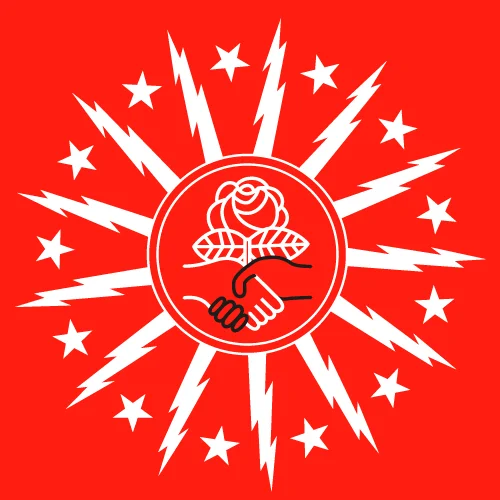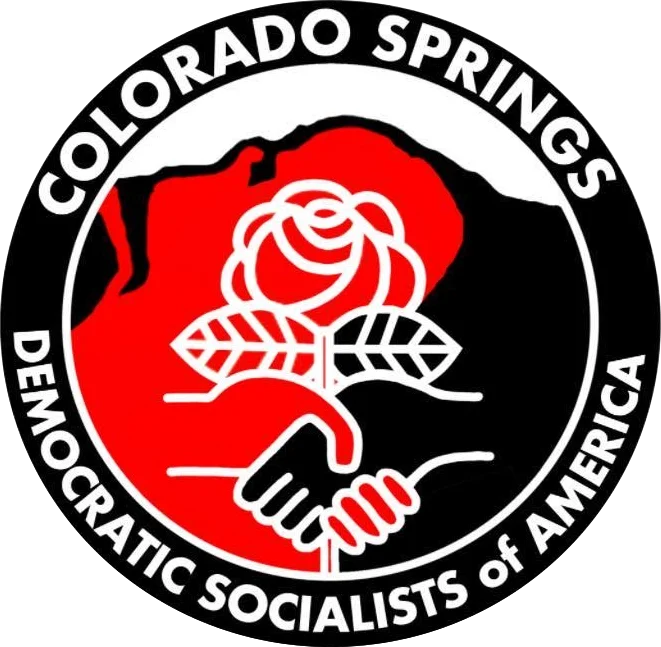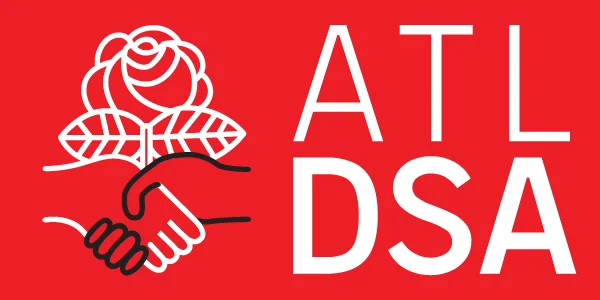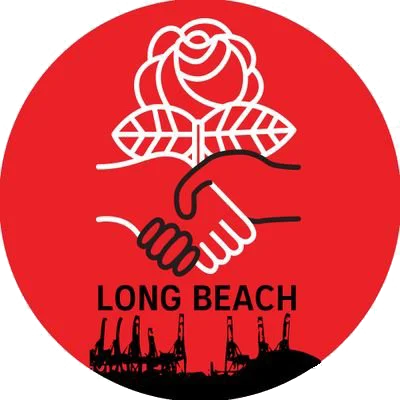

OVERTURNING ROE IS AN ATTACK ON THE WORKING CLASS
Socialist Feminism cannot ignore the brutal reality of international capitalism.
A robust critique of capitalism is the only way to achieve a global understanding of women’s oppression.
Patriarchy predates capitalism, and the oppression of women transcends class. From unpaid domestic labor to cultural expressions of misogyny, socialism must confront the specific realities of women’s lives.
The path to achieving true equality requires a focused critique of the cultural force of patriarchy.
One response to “OVERTURNING ROE IS AN ATTACK ON THE WORKING CLASS”
-
Hey
 DSA of Broward County. Pleased to meet you! I understand and sympathize with the struggle of women for their political and economic rights as human beings to be recognized and their resistance against unnecessary and sometimes brutal societal pressures; which you guys call the ‘Patriarcy’ and which I generally associate with times past. But What I don’t understand is: what does the ‘Patriarcy’ have to do with innocent lives being brutally murdered in the womb? Roe V. Wade was rightfully abolished. Just because a fetus proves to be an inconvenience to the mother doesn’t give the Constitutional right or any right to abort (kill) the fetus. No one ever, at any time has the right to take away another’s life. Now don’t get me wrong I would understand if abortion is necessary to save the mothers life or because of rape or incest and I think the question of abortion should only be left to women who fit those situations. And even if the mother’s life is at risk, abortion should not be the first resort, we can advocate for the saving of both the mother and the child. The early signs of potential birth complications can be detected and prevented and the complications that can arise during child birth that could be detrimental to the mother can be treated. And Capitalism does not pepatuate oppression of women
DSA of Broward County. Pleased to meet you! I understand and sympathize with the struggle of women for their political and economic rights as human beings to be recognized and their resistance against unnecessary and sometimes brutal societal pressures; which you guys call the ‘Patriarcy’ and which I generally associate with times past. But What I don’t understand is: what does the ‘Patriarcy’ have to do with innocent lives being brutally murdered in the womb? Roe V. Wade was rightfully abolished. Just because a fetus proves to be an inconvenience to the mother doesn’t give the Constitutional right or any right to abort (kill) the fetus. No one ever, at any time has the right to take away another’s life. Now don’t get me wrong I would understand if abortion is necessary to save the mothers life or because of rape or incest and I think the question of abortion should only be left to women who fit those situations. And even if the mother’s life is at risk, abortion should not be the first resort, we can advocate for the saving of both the mother and the child. The early signs of potential birth complications can be detected and prevented and the complications that can arise during child birth that could be detrimental to the mother can be treated. And Capitalism does not pepatuate oppression of women  ; on the contrary, Capitalism has lifted countless women out of poverty, take Madam C.J. Walker aka Sarah Breedlove for example. And also women are not general paid less than men for the same work, in many cases women out pac men. The dilemma is that married women tend to earn less than men and less than unmarried women due to their precious and important roles as mothers. Thank you for your time!
; on the contrary, Capitalism has lifted countless women out of poverty, take Madam C.J. Walker aka Sarah Breedlove for example. And also women are not general paid less than men for the same work, in many cases women out pac men. The dilemma is that married women tend to earn less than men and less than unmarried women due to their precious and important roles as mothers. Thank you for your time!


Statement on the Repeal of Roe v. Wade
From the Buffalo DSA Healthcare Work Group:
Today’s Supreme Court ruling in Dobbs v. Jackson Women’s Health Organization overturns the right to abortion which is supported by the majority of the people in country.
People have to fight back. But the abortion fight has been taken over by professionals with a clever legal strategy and a polished PR campaign for politicians, nonprofits, and individualistic aid efforts that all distract from the class war destroying working people and American public life.
These “experts” have failed. We cannot trust their institutions or politicians to wage a fight for what little we have left of abortion rights. Their apologetic arguments emphasize individual “choice,” privacy, and worst case scenarios, rather than plainly stating that abortion and birth control have a central role in the freedom of working people.
Let’s learn from socialist countries, the first and best on abortion, who went up against the established church and valued women as workers and comrades, starting with the Soviet Union providing free abortion in public hospitals and clinics in 1920. When Western Europe won legal abortion in the mid- to late 70s, it was simply included in the national health systems that the labor movement and left parties had already instituted. Irish feminists in their 2018 referendum didn’t just talk about the situations in which abortion might be needed to save lives. They said “free, safe, legal” and organized to bring abortion into their healthcare system by publicly and plainly telling the truth about it.
In America’s post-war labor compromise, it was decided that we would get healthcare through our jobs rather than a universal system – so when we won abortion legally, we still had to figure out how to pay for it. Roe v. Wade protected the private right to buy an abortion procedure on the healthcare marketplace.
Never forget that these compromises were made to discipline American workers through horrible working conditions – including reproductive working conditions: we are not guaranteed universal childcare, healthcare, or paid leave. We are tied to our employers in the marketplace, and fear agitating for more.
Today’s decision is possible because of our minoritarian political system and class domination. We can’t let the same undemocratic forces continue to absorb movement politics. We can’t mobilize for one day in the streets, then move on. We can’t let establishment defenders of the Roe-status-quo continue to tell working class people that private healthcare and abortion is the solution to our bad working conditions and insecure, expensive healthcare and childcare!
Abortion is healthcare, and must be: Public. Free. Safe. Legal.
linktr.ee/buffalodsa ~ protectabortion.org
Show up. Meet people mobilizing in outrage about the Supreme Court Decision, wherever they are in your community.
- Become a part of an organization to structure and amplify your decisions and demands.
- Have real conversations with people about their experiences and what they care about. Make sure to get their contact information so you can channel your rage into organizing and durably change our political-economic system.
Follow up. Organize for universal, public healthcare that includes reproductive care as an essential, and normal, service.
- Collectively, we must refuse to vote for or donate to politicians that do not fight for Medicare for All on the federal level, or New York Health Act on the state level: legislation that would institute a public, single-payer healthcare system.
- We must fight and organize together. Strategize, provide political education, knock doors, and make calls with a democratic membership organization like DSA about single payer healthcare.
- Buffalo DSA has a militant, badass Healthcare Committee: Meeting, July 5
Work it out. Radicalize your coworkers and union into the fight for universal, single payer healthcare.
- Your union can extract wins from your boss, but we can all fight back against the boss class making these decisions. Politicize your coworkers. DSA union members can use this guide to organize their co-workers and unions.
- Union members are strongly encouraged to work with our Healthcare Committee to provide political education on how American healthcare disciplines labor and families, as well as how we can fight back together.


Colorado Springs DSA Statement on the Supreme Court’s Ruling to Overturn Roe v. Wade
The Senate Must Take Action
The Colorado Springs Democratic Socialists of America condemns the Supreme Court’s ruling to overturn Roe v. Wade. We strongly believe that all people have the right to reproductive freedom and to practice bodily autonomy. This ruling is an extreme overstep by an authoritarian Supreme Court and is an attempt to reassert patriarchal social norms and thwart women’s liberation.
We will not let this move go unchallenged. We call on Senators Bennet and Hickenlooper to end the filibuster, codify the right to an abortion, bring forward and vote to pass legislation that would end lifetime appointments to the Supreme Court, to add additional seats to the Supreme Court to end partisan supermajorities that threaten our democracy, and to pass an amendment to the U.S. Constitution that guarantees peoples’ right to reproductive freedom. Safe abortion access is a human right and we call on all Colorado and Colorado Springs legislators to declare it so.
In the face of rising authoritarianism, we must champion the principles of democracy and organize to defend our democratic and human rights. The Colorado Springs Democratic Socialists of America is committed to pushing back against the threat of fascist and patriarchal rule in these critical times for democracy.


Abortion is a Human Right
Emergency Protest – Friday, June 24, 6:30pm at State Capitol
Mass Meeting – Saturday, June 25, 4pm at 711 Catherine St SW
Abortion is healthcare and a human right, fundamentally tied to the principle of bodily autonomy. We condemn the Supreme Court’s decision to overturn Roe v Wade, which will harm and criminalize working people. This decision is an act of class warfare, and we must oppose this undemocratic assault on our human rights.
This decision shows further proof of what we’ve seen for decades: that the Supreme Court has become a rogue institution uninterested in protecting the constitutional rights of the people and more focused on fulfilling the interests of major corporations and far-right Christian nationalists.
The Supreme Court has made barbaric decisions in the past, upholding segregation in the 19th century and overturning labor protections in the 1920s. These undemocratic rulings were only overturned with the power of mass working class movements that challenged instituted powers at their core. We urge people to make their voices heard and reject all politicians who oppose the right to control one’s own body.


DSA LB Roe v Wade Statement
The decision of the conservative Supreme Court to strip Americans of their right to access abortion is appalling. We are not surprised that the most conservative set of justices in... Read more »
The post DSA LB Roe v Wade Statement appeared first on DSA-LB.


Petro in Colombia and Refund NYC


Legislative Let-Down: Fighting for Good Cause and Public Renewables
The elected officials of New York State ended their legislative session in Albany on June 2nd. They are headed home for the summer after failing to secure the rights of tenants or meeting New York state’s climate goals, refusing to pass Good Cause Eviction and the Build Public Renewables Act. What happened? To try and answer this and more, we bring on socialist organizers to break down what happened in Albany and how New York lawmakers left tenants and the climate out to dry. Tonight, we are joined by Avi, a tenant organizer fighting for the Right to Remain, and RPM’s co-host and ecosocialist specialist, Lee Ziesche. We will assess the situation in Albany and the movement necessary, both inside and outside the halls of the State Capitol, to defeat the corporate opposition and make Good Cause and BPRA a reality in the Empire State.
Visit right2remain.com to learn more about the ongoing campaign to pass Good Cause Eviction legislation in New York state.
On this show, Lee references the Sane Energy Project (saneenergy.org) and No NBK Pipeline Coalition (nonbkpipeline.org) as well as the NYC-DSA Ecosocialist Working Group (https://ecosocialists.nyc/).


Our June Issue
Volume 1, Issue 8


Our May Day Playlist
By Seth


‘Anyone Can Join A Union’ Pamphlet
Download and print your own copy of our International Workers’ Day pamphlet from the first annual Janesville May Day Celebration.
 DSA of Broward County. Pleased to meet you! I understand and sympathize with the struggle of women for their political and economic rights as human beings to be recognized and their resistance against unnecessary and sometimes brutal societal pressures; which you guys call the ‘Patriarcy’ and which I generally associate with times past. But What I don’t understand is: what does the ‘Patriarcy’ have to do with innocent lives being brutally murdered in the womb? Roe V. Wade was rightfully abolished. Just because a fetus proves to be an inconvenience to the mother doesn’t give the Constitutional right or any right to abort (kill) the fetus. No one ever, at any time has the right to take away another’s life. Now don’t get me wrong I would understand if abortion is necessary to save the mothers life or because of rape or incest and I think the question of abortion should only be left to women who fit those situations. And even if the mother’s life is at risk, abortion should not be the first resort, we can advocate for the saving of both the mother and the child. The early signs of potential birth complications can be detected and prevented and the complications that can arise during child birth that could be detrimental to the mother can be treated. And Capitalism does not pepatuate oppression of women
DSA of Broward County. Pleased to meet you! I understand and sympathize with the struggle of women for their political and economic rights as human beings to be recognized and their resistance against unnecessary and sometimes brutal societal pressures; which you guys call the ‘Patriarcy’ and which I generally associate with times past. But What I don’t understand is: what does the ‘Patriarcy’ have to do with innocent lives being brutally murdered in the womb? Roe V. Wade was rightfully abolished. Just because a fetus proves to be an inconvenience to the mother doesn’t give the Constitutional right or any right to abort (kill) the fetus. No one ever, at any time has the right to take away another’s life. Now don’t get me wrong I would understand if abortion is necessary to save the mothers life or because of rape or incest and I think the question of abortion should only be left to women who fit those situations. And even if the mother’s life is at risk, abortion should not be the first resort, we can advocate for the saving of both the mother and the child. The early signs of potential birth complications can be detected and prevented and the complications that can arise during child birth that could be detrimental to the mother can be treated. And Capitalism does not pepatuate oppression of women  ; on the contrary, Capitalism has lifted countless women out of poverty, take Madam C.J. Walker aka Sarah Breedlove for example. And also women are not general paid less than men for the same work, in many cases women out pac men. The dilemma is that married women tend to earn less than men and less than unmarried women due to their precious and important roles as mothers. Thank you for your time!
; on the contrary, Capitalism has lifted countless women out of poverty, take Madam C.J. Walker aka Sarah Breedlove for example. And also women are not general paid less than men for the same work, in many cases women out pac men. The dilemma is that married women tend to earn less than men and less than unmarried women due to their precious and important roles as mothers. Thank you for your time!
Leave a Reply